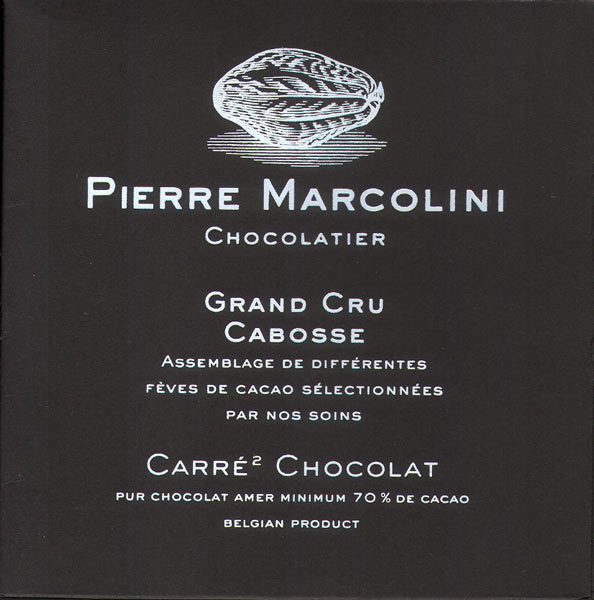
Impact
Chocolate alchemy that nearly recreates the taste inside cacáo’s fruit pod the moment it’s cut open & scooped out – the pulp, the seeds... the whole shabang. A chocolate bar version of that recombinant DNA. Hence the name, Cabosse, i.e., pod.
Appearance 5 / 5
| Color: | golden chestnut |
| Surface: | another in a series of Marcolini’s catwalk for supermodels |
| Temper: | charismatic |
| Snap: | purse snap; fine-sanded edge |
Aroma 8.1 / 10
pervasive roast over Marcolini’s strongest fruit ferment yet: cooked prune underpinning cream tangerine
Mouthfeel 12.5 / 15
| Texture: | viscous |
| Melt: | glorious |
Flavor 43.2 / 50
chocolate cream -> light Indonesian orange blossom to the fore -> shifts to Venezuelan red (raspberry & plum), against pliable wood counter saturated w/ chocolate stain as crushed nibs take effect, both in taste & texture (virtually imperceptible praline-like micro-crunch) -> spice (vanilla, star anise) soak in citric tonic (lime, barberry, & meyer lemon) as Java returns this time w/ honey -> blows out w/ an upsurge in chocolate
Quality 18 / 20
2 beans which separately in Marcolini’s hands are smoked-filled rooms of their own; knock the wall down between them & expect fire-detectors to go off - clearing the area. But just the opposite occurs. Their combined smoldering draws each other into fusion cuisine: a fruit bowl with móle sauce in a curious balance of forces. Heft & sweetness of Venezuela + Java’s smoked citrus seem bent to clash but work remarkably well together because of a) shared genetic heritage (the cacáo transplants into Java in 1888 trace back to Venezuela) & b) Marcolini’s rather unique handling of Sur del Lago beans (Venezuela), drawing their contrasting differences closer toward unison. Both equalize along a dark undertoned continuum while trading acidic top notes (one predominantly sweet & red; the other yellow & citric), creating what a blend should be – a flavor that otherwise does not occur naturally.




